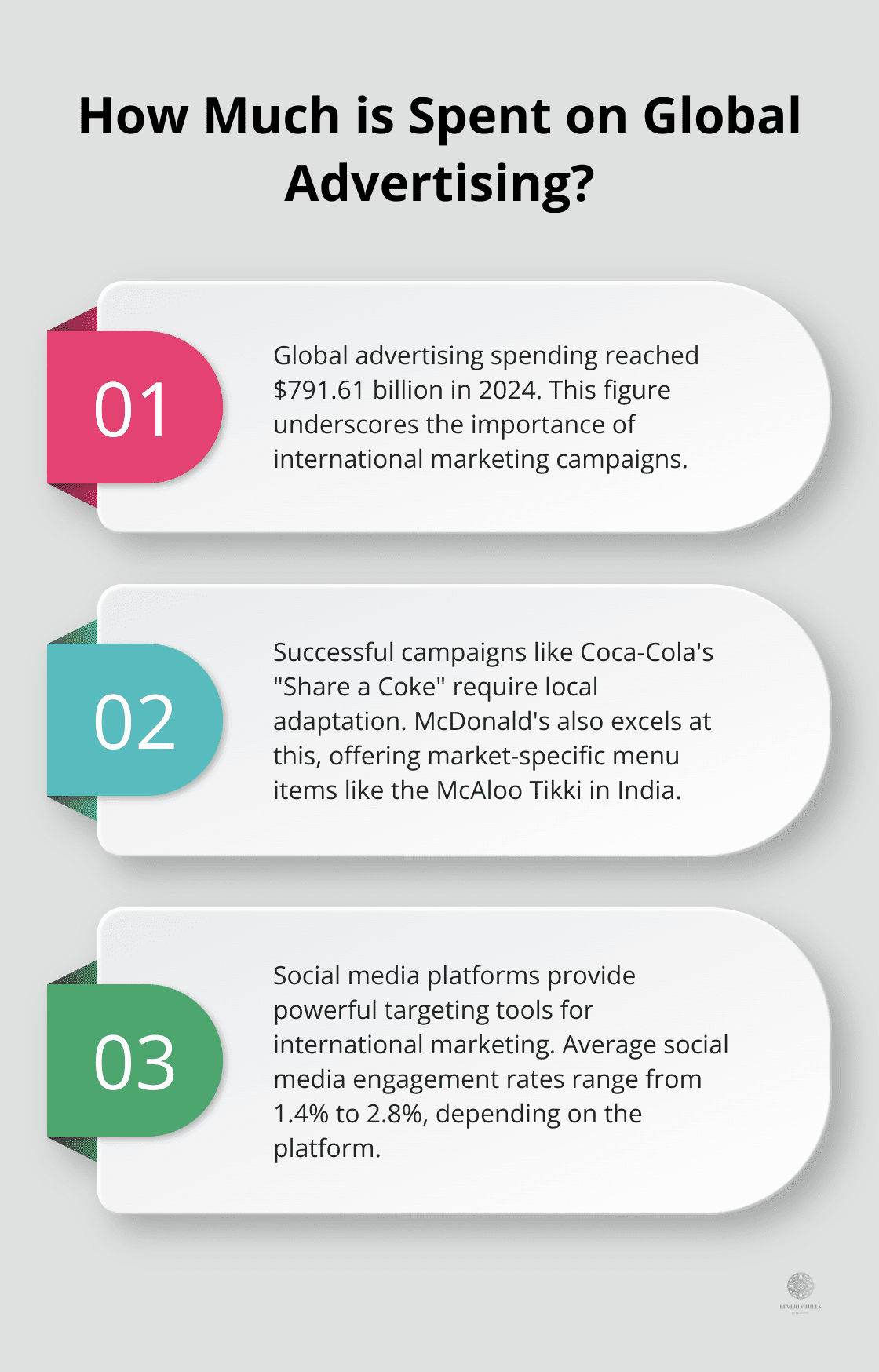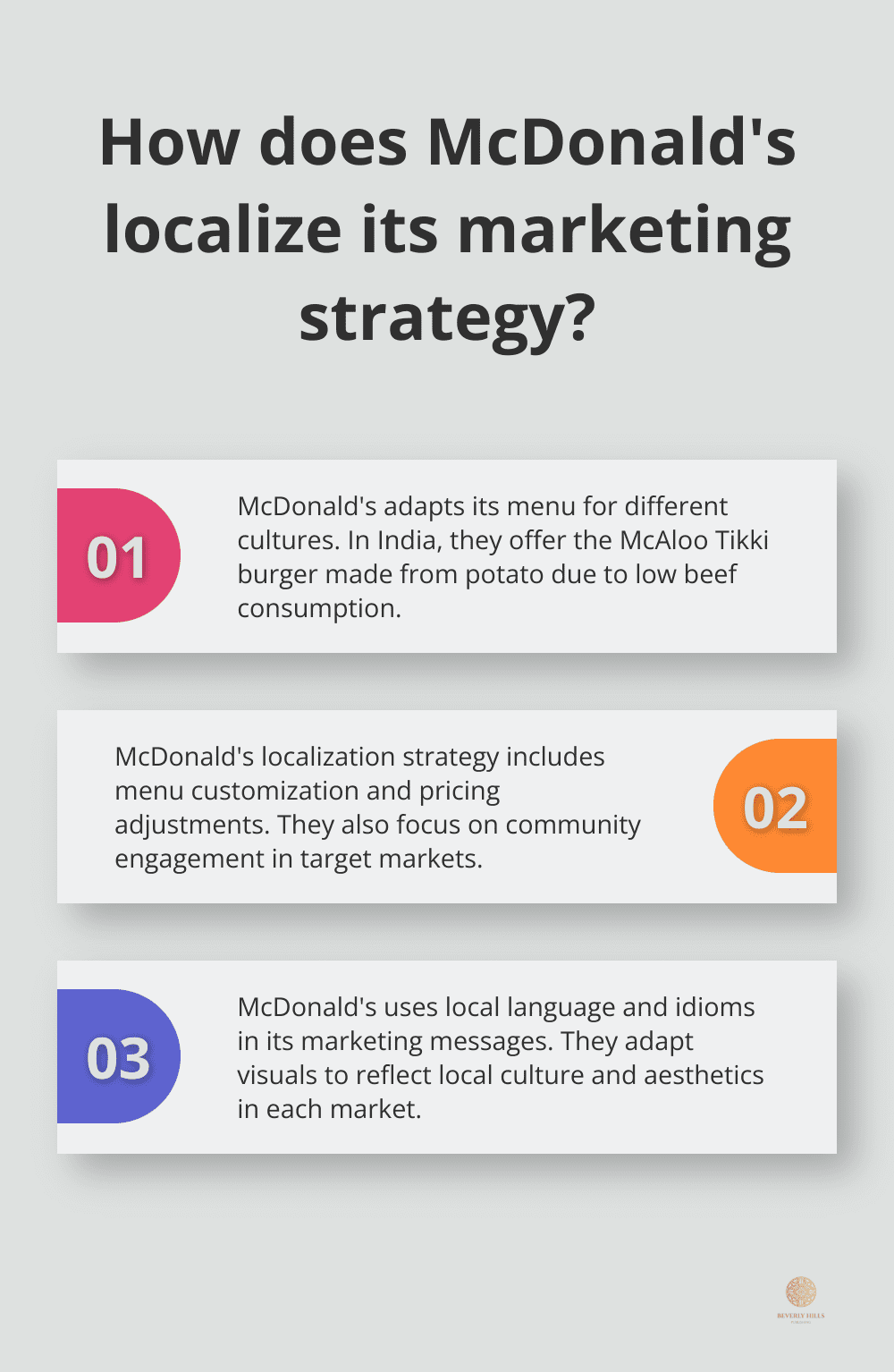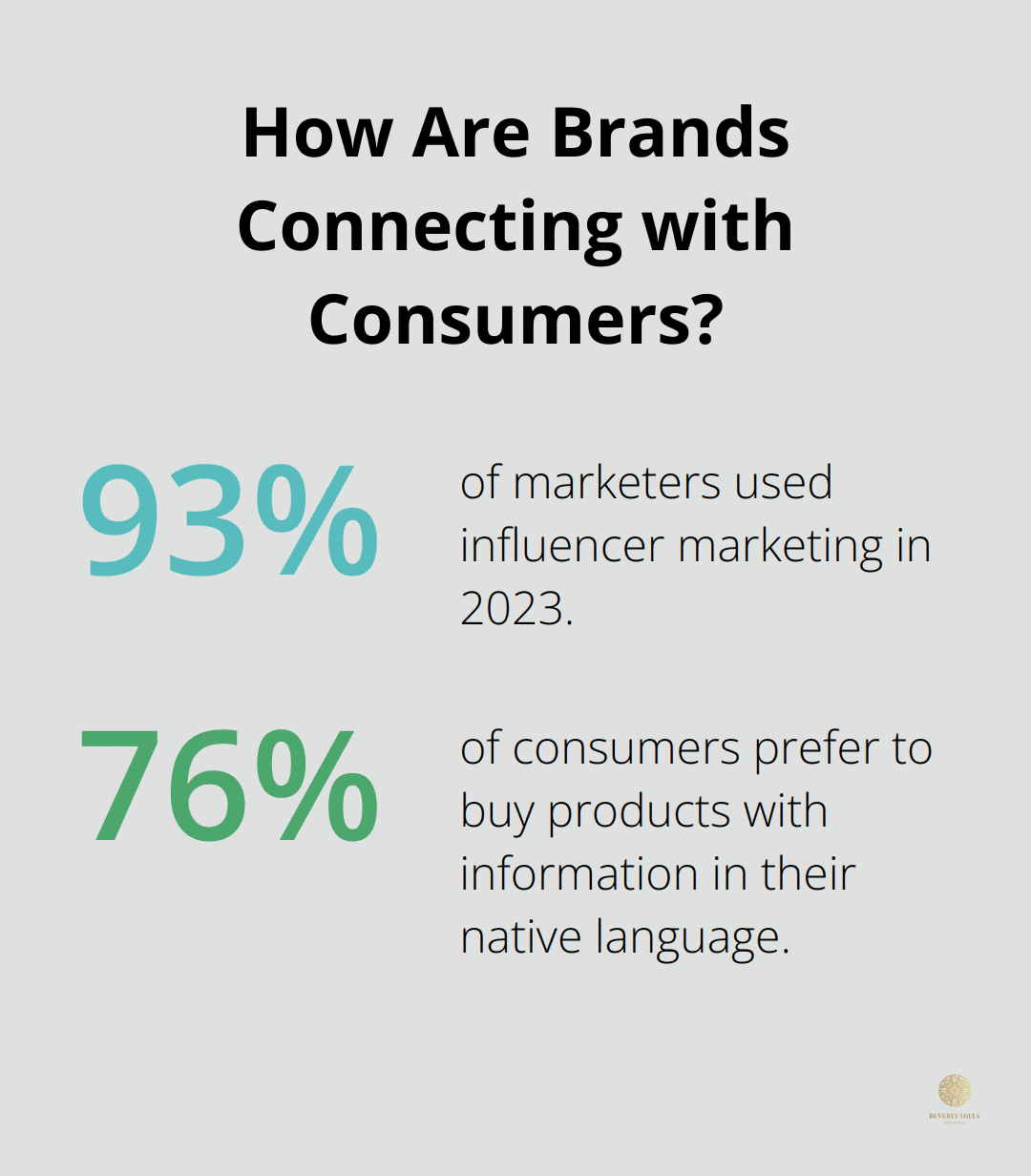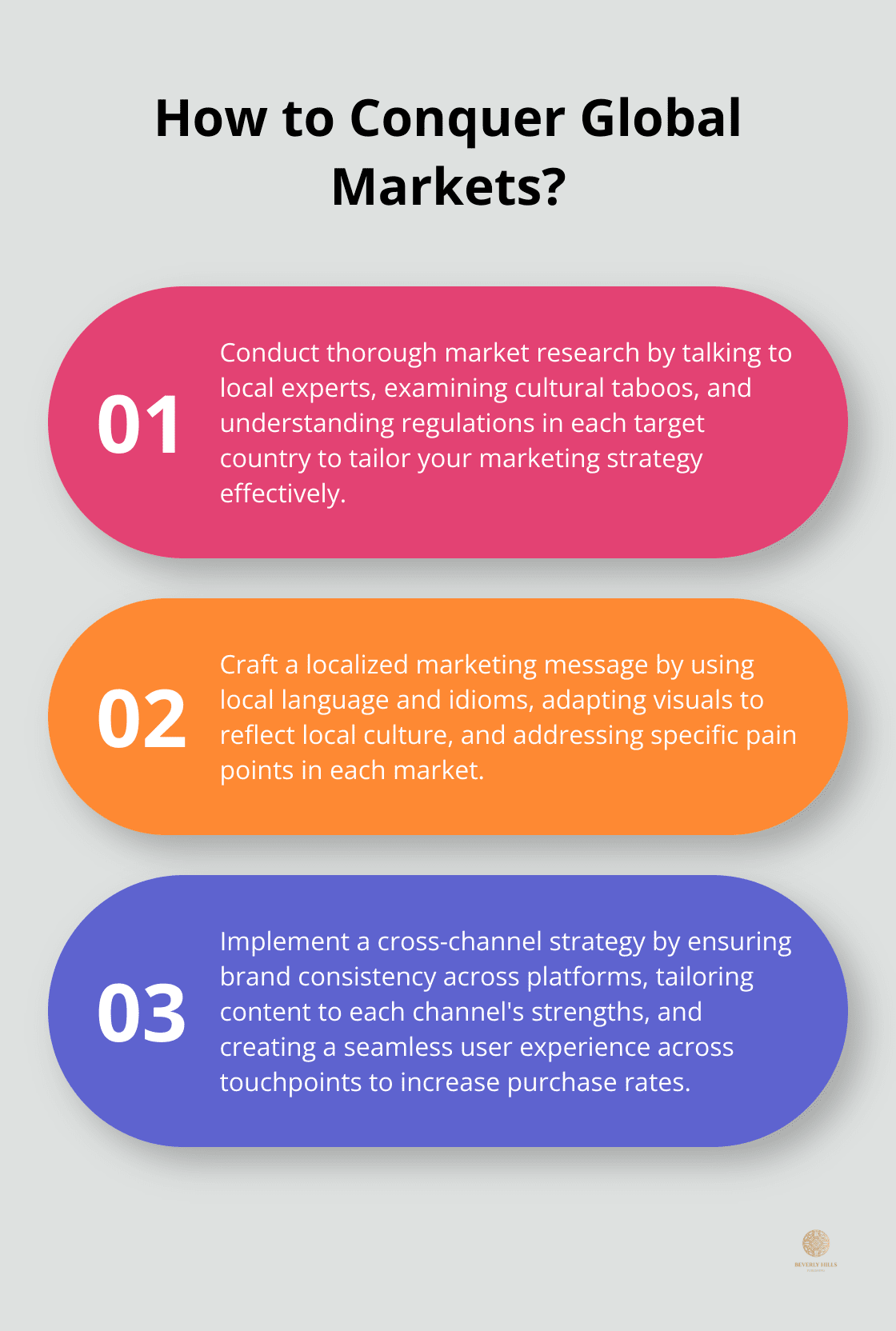At Beverly Hills Publishing, we understand the power of global brand presence. International marketing campaigns are essential for businesses looking to expand their reach and tap into new markets.
In this guide, we’ll show you how to book international marketing campaigns that resonate across borders. We’ll cover everything from planning strategies to executing successful global initiatives.
What Are International Marketing Campaigns?
Defining Global Marketing Initiatives
International marketing campaigns are strategic initiatives that promote products, services, or brands across multiple countries. These campaigns transform businesses, open doors to new markets, and create opportunities on a global scale.
The Impact of Global Brand Presence
A strong global brand presence is no longer optional-it’s essential. In 2024, advertising spending worldwide reached approximately 791.61 billion U.S. dollars. This staggering figure highlights the importance of having a voice in the international marketplace. Companies with a global presence often experience increased revenue, enhanced brand recognition, and improved customer loyalty.
Key Differences: Domestic vs. International Campaigns
While domestic campaigns focus on a single market, international campaigns must navigate a complex web of cultural, linguistic, and regulatory differences. Coca-Cola’s “Share a Coke” campaign exemplifies this challenge. The company had to adapt the campaign for each market, changing names on bottles to suit local preferences.
The Art of Local Market Adaptation
Successful international campaigns require more than translation. They demand a deep understanding of local cultures, customs, and consumer behaviors. McDonald’s excels at this approach. In India, they offer the McAloo Tikki burger, while Japanese customers can enjoy the Teriyaki McBurger. These localized offerings cater to specific tastes and preferences in each market.
Harnessing Technology for Global Reach
Modern technology has simplified the process of reaching international audiences. Social media platforms like Facebook and Instagram provide powerful targeting tools that allow businesses to connect with specific demographics in different countries. The average social media engagement rate is 1.4% to 2.8%, depending on the platform, making it an invaluable tool for international marketing.

As we move forward, we’ll explore how to plan and execute these complex yet rewarding international marketing campaigns. The next section will guide you through the crucial steps of developing a robust international marketing strategy.
Planning Your Global Marketing Strategy
Market Research: The Foundation of Success
Comprehensive market research forms the cornerstone of any successful international campaign. This process involves more than translating existing marketing materials; it requires a deep understanding of cultural nuances, consumer behaviors, and market dynamics in each target region.

Procter & Gamble’s experience with Pampers in Japan illustrates the importance of cultural understanding. Initially, P&G struggled due to images of babies on packaging, which Japanese consumers considered bad luck. After thorough research and strategy adaptation, P&G successfully penetrated the market.
To conduct effective market research:
- Talk to local experts in potential markets
- Dive into secondary data from reliable sources
- Understand cultural taboos and sensitivities
- Examine local regulations and legal requirements
Setting Clear Objectives and KPIs
After gathering market insights, set clear, measurable objectives for your campaign. These should align with your overall business goals and be specific to each target market.
Examples of objectives include:
- Increase brand awareness by 20% in the German market within six months
- Achieve a 15% market share in Brazil within the first year
- Generate 10,000 leads from the Australian market in Q3
Establish Key Performance Indicators (KPIs) to track your progress. These might include metrics like website traffic from target countries, social media engagement rates, or sales figures.
Crafting a Localized Marketing Message
Focus on developing a marketing message that resonates with your target audience. This process goes beyond simple translation – it’s about cultural adaptation.
McDonald’s exemplifies this approach. In India, where beef consumption is low, they offer the McAloo Tikki burger (made from potato). Their localization strategy includes menu customization, pricing adjustments, and community engagement.
When crafting your message:
- Use local language and idioms correctly
- Adapt visuals to reflect local culture and aesthetics
- Consider local holidays and events in your timing
- Address local pain points and desires
Selecting the Right Marketing Channels
Different markets often prefer different communication channels. While social media might dominate in the U.S., traditional media could prove more effective in other regions.
For example, in China, platforms like WeChat and Sina Weibo dominate the social media landscape. In contrast, radio advertising remains highly effective in many African countries.
Research the most popular and effective channels in each target market. Consider factors like internet penetration, mobile usage, and traditional media consumption habits.
A multi-channel approach often yields the best results. Integrate your efforts across various platforms to create a cohesive brand experience for your international audience.
The next step in your international marketing journey involves executing your carefully crafted strategy. In the following section, we’ll explore how to transform your plans into a successful global marketing campaign (including tips on partnering with local agencies and adapting content for different cultures).
Executing Your Global Campaign
Leveraging Local Partnerships
Partnering with local agencies or influencers adds authenticity and reach to your campaign. In 2023, 93% of marketers used influencer marketing, with a 5% increase in effectiveness compared to the previous year (according to the Influencer Marketing Hub). These partnerships provide valuable insights into local markets and help tailor your message effectively.

Airbnb’s expansion into China exemplifies successful local partnerships. They collaborated with Alibaba’s Alipay and Tencent’s WeChat, integrating with local payment systems and leveraging established user bases. This strategy contributed to the growth of Chinese tourists traveling abroad, which increased by over 10% in 2015 according to the China Tourism Academy.
Cultural Adaptation: More Than Translation
Adapting content transcends mere translation. It’s about connecting with local cultures and values. A study by Common Sense Advisory found that 76% of consumers prefer to buy products with information in their native language.
Netflix excels at cultural adaptation. They create original shows for specific markets, such as “Dark” in Germany, which was Netflix’s first German-language original series, and “Sacred Games” in India. These localized content strategies drive global success.
To adapt your content effectively:
- Use local idioms and cultural references
- Adjust visuals to reflect local aesthetics
- Consider local humor and taboos
- Adapt your tone to match local communication styles
Implementing a Cross-Channel Strategy
A cohesive cross-channel strategy ensures consistent messaging across all platforms. According to Omnisend, marketing campaigns using three or more channels earned a 287% higher purchase rate than single-channel campaigns.
Starbucks’ rewards program demonstrates this approach. It integrates mobile app orders, in-store purchases, and online engagement, creating a unified brand experience across channels.
To implement your cross-channel strategy:
- Ensure brand consistency across all platforms
- Tailor content to each channel’s strengths
- Use data to understand how customers move between channels
- Create a seamless user experience across touchpoints
Real-Time Monitoring and Adjustment
Real-time monitoring and adjustment are essential in international marketing. Tools like Google Analytics, Hootsuite, and Sprout Social offer invaluable insights into campaign performance across different regions.
Adidas’ “Create Your Own Game” campaign during the 2018 FIFA World Cup showcases the power of real-time adaptation. They monitored social media trends and adjusted their content strategy daily, resulting in over 1.5 million mentions and 1.2 billion impressions.
To monitor and adjust your campaign effectively:
- Set up real-time tracking for key metrics
- Use A/B testing to optimize content for different markets
- Prepare to pivot quickly based on performance data
- Review and update your strategy regularly based on insights
Final Thoughts
International marketing campaigns have become essential in our interconnected world. These campaigns offer immense potential for businesses to expand their reach, tap into new markets, and build a global brand presence. Success depends on thorough planning, cultural sensitivity, and adaptable execution.

Effective international marketing requires comprehensive market research, clear objectives, and the right marketing channels. Execution brings your strategy to life through local partnerships, cultural adaptation, and a cohesive cross-channel approach. Real-time monitoring allows for quick adjustments based on performance data.
At Beverly Hills Publishing, we understand the complexities of international marketing campaigns. Our approach combines publishing with strategic branding and marketing, helping authors establish themselves as leading authorities in their industries. The world is your marketplace-seize the opportunity to make your mark on the global stage.















































































































































































































































